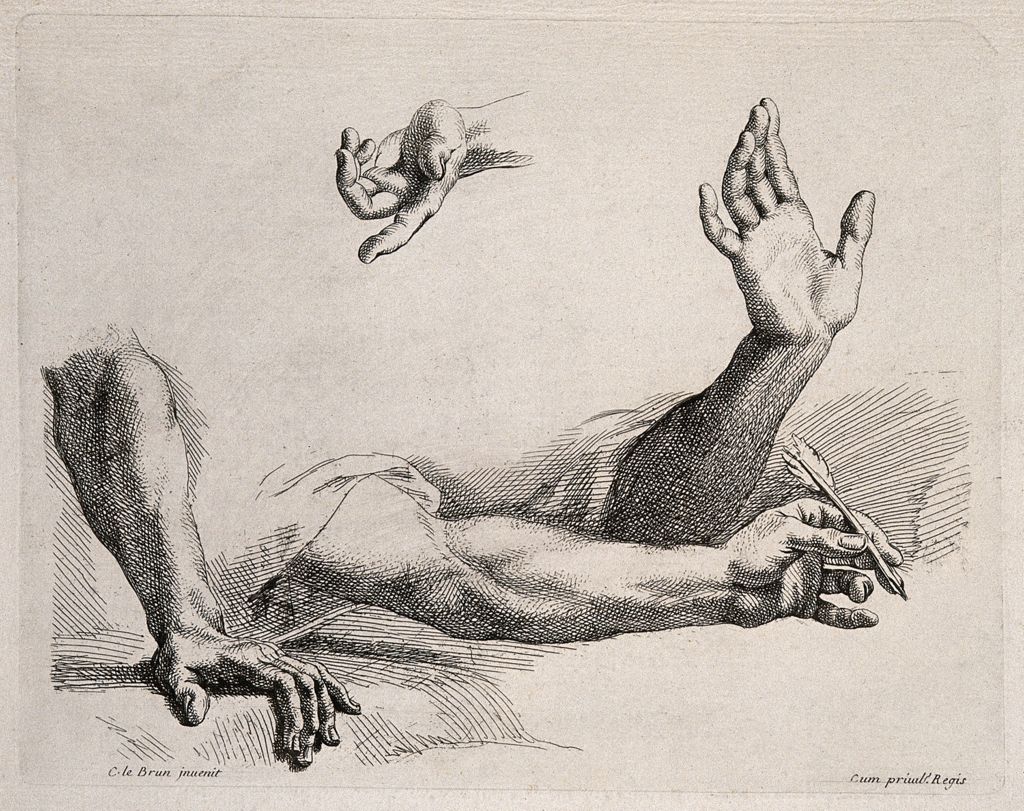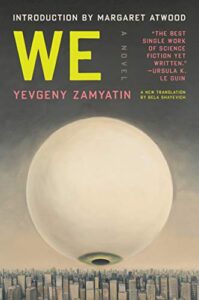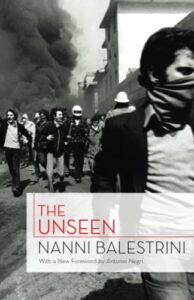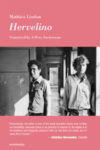This essay was first published last month in our subscriber-only newsletter. To receive the monthly newsletter and to support Full Stop’s original literary criticism, please consider joining us on Patreon.

It’s hard to underestimate how thoroughly human experience is now dominated by individual psychology. The way each of us thinks and feels about things is taken to be the sum total of what we can understand about reality and our place in it. The perspective of the self serves as a filter for all other perspectives, like that of the group, the family, society, etc. Each of us—we are endlessly told—has a unique voice that matters above everything else and needs to be heard.
The present emphasis on individual psychology is a product of a neoliberal regime that promotes ever greater capitalist productivity by emphasizing individual “freedom.” As the philosopher Byung-Chul Han argues, in place of the disciplinary strategies of biopolitics, a psychopolitics has taken root and its calling card is permissiveness. We are encouraged—or rather “empowered”—to turn ourselves and our lives into marketable projects. This amounts to a subtle and seductive mode of social control that targets the human need for self-expression and acknowledgement. In an increasingly digital economy, where immaterial production rules, the psyche itself has been turned into a productive force. We give away our opinions and reveal our innermost desires in a bid to assert ourselves that is indistinguishable from self-exploitation.
Han sketches a way out of this dismal state by turning back to Foucault, who, in his late thinking, embraced the Socratic notion of “the art of living,” which construes modern philosophy not as a theoretical exercise but as a way of life centered on radical truth-telling in relation to “illusion, deception, trickery, and flattery.” Crucially, for Foucault, this approach involves rejecting the primary way modern subjects understand themselves: “The art of living is the art of killing psychology.” In his own brief treatment of the matter, Han forcefully asserts that “the art of living, as the praxis of freedom, must proceed by way of de-psychologization.”
This tantalizing and bracingly negative provocation clears the field for the modern self, leading inevitably to the question of what follows: If the subject is freed to some extent from their psychology, what insights and experiences become available to them? What changes about their relation to themselves and to the world?
In this essay I’d like to pursue these questions by focusing on the way parts of the human body are depicted in a mode of literature that lends itself well to imagining the possibilities of an existence not dominated by individual psychology. In a previous essay in this magazine, I identified and described non-protagonist-centered fiction, a minor literary tradition that is distinguished by its capacity to short-circuit the transformation of characters into protagonists. Works like Shirley Jackson’s “The Lottery,” Natalia Ginzburg’s Voices in the Evening, and Hiroko Oyamada’s The Factory formally reduce the presence of any character by restricting the amount of narrative attention they receive. Reduction here is generative, creating space in the text for perspectives on the self and the world that go beyond individual thoughts and feelings.
So much of our experience is not dictated by ourselves. We are shaped by forces, contained by institutions, reduced by enormous scales of time, and impinged on by the stuff of our material surroundings. We are, in other words, constituted by the world in all sorts of fundamental ways. Non-protagonist-centered fiction foregrounds this major dimension of our lives, which entails reckoning with the fact that the world is independent of us. That, to paraphrase Alain Robbe-Grillet, is simultaneously the most remarkable and obvious thing about it. The meanings and possibilities of the world always necessarily exceed our attempts to contain them.
In the history of the West, the independence of the world has mainly been treated as a problem in need of a fix, particularly with the advent of modernity and its drive to master reality by elevating the reach and power of the individual. This tendency is reflected in modern literature whose initial rise (Don Quixote, Robinson Crusoe) and subsequent development has focused on eliminating or at least minimizing the distance between self and world by building up the protagonist. The consolidation, in the nineteenth century, of realism and its attendant psychological perspective, further entrenched the protagonist as the star of the text with everything else revolving around them and serving as an extension of their internal moods (whether as reflection or foil). The sphere of influence encompasses not just others characters, objects, forces, and events in the text but also the very body of the protagonist, which is typically significant only as a symbol for the self. The protagonist, no matter their fate, thus undermines the independence of the world they occupy by constituting it with their own particular meaning. Such mastery of signification—which fuels the larger-than-life nature of protagonists—is a major source of the indisputable power of protagonist-centered writing.

To give just one example, there’s the death-obsessed narrator of Don DeLillo’s White Noise, who, lying awake in the middle of the night, makes the following observation: “In the dark the mind runs on like a devouring machine, the only thing awake in the universe.” It is obvious but important to note that this is not a true statement; at any given moment, countless things are awake in the universe. Here, though, everything is dead because in this fictional universe it is only the narrator/protagonist’s particular psychological outlook that matters. Jack Gladney’s fear of death should diminish, or devour, his sense of self, and yet, paradoxically, it only serves as a means of self-aggrandizement. He is mightily alive because in this narrative he is allowed to stand over and above the universe. He is master of all other textual elements—including his physical characterization as “haunted, ashen, lost” with “slumped shoulders”—because they derive their meaning from his condition.
Relinquishing mastery of this sort amounts to taking a different approach to the matter of human experience. In non-protagonist-centered writing, narrative attention, freed from its commitment to a particular individual, is redistributed across the field of fictional reality, releasing unusual perspectives and forms of knowledge. The perspective of individual psychology is not necessarily eliminated—which makes this a modest realization of the call to de-psychologize—but rather sidelined so that it makes up only one element in the larger schema of the text. Human experience is not rejected but seen more broadly. When the independence of the world is re-asserted, it becomes readily apparent that the way any individual thinks and feels about the world does not exhaust their experience in it.
The perspective of non-protagonist-centered fiction encompasses not just the way we are shaped by external forces and objects but also the non-psychological experience of our bodies, the very matter that constitutes us. Here, the important thing, perhaps ironically, is the necessity of getting outside of ourselves. If we do not privilege individual subjectivity we can see the body in a truly unusual way: as a particular object in space that consists of various parts that are meaningful beyond the definitions of the self.
Gaining this very different perspective on the body means disengaging from a fundamental capitalist tenet which stipulates that the body is the private property of the individual. The ownership model encompasses not just the idea that the body, as a sort of servant, physically carries out the demands of the self, but also that it derives all of its meaning from the self. The body as an expression of subjectivity is a whole that is greater than the sum of its parts, which generally precludes consideration of any part of the body as an independent object that is constituted by the forces of the world. And this is the case even if there happens to be something wrong or exceptional about the body part in question.
We can get a greater purchase on this phenomenon by considering the way that parts of the body are depicted in literature. As a rule, their import is determined entirely through a synecdochical relationship with the whole of the person to which they belong. The biblical figure Samson is a literal example as his hair is meaningful to the extent that it embodies his strength as an individual. Or we can recall, following Roman Jakobson, the prevalent use of synecdoche in War and Peace as when the youthfulness of Liza Bolkonsky is represented in terms of her downy mustache.
What emerges, in these and other examples, is that part and whole are in a hierarchical relation in which the latter fixes the meaning of the former. But parts of the body, like any other feature of the phenomenal world, can be seen in any number of different ways and can carry as many meanings as we can imagine. How can we tap into those possibilities?
The answer seems clear: There needs to be a gap between the person and the part such that the latter has some measure of independence. Such examples exist in protagonist-centered work yet they tend to fall within a very narrow band of significance. When a part of the body is not acting in concert with the whole, there is usually something wrong with it and the individual to whom it belongs. This can be a matter of sickness, whether physical or psychical, but whatever the immediate cause, the problem always comes down to the independence of something that is usually contained and controlled. This idea is so bizarre and disturbing—such a blow to the modern ego—that it has found a natural home in ghost and horror stories (e.g., the murderous hand with a mind of its own) and, beyond, it is often deployed as a metaphor for extreme states of duress.
For an example, we can turn to Yevgeny Zamyatin’s modernist dystopian classic We, which, as the scholar Eliot Borenstein has shown, turns on the shifty logic of synecdoche. The protagonist, D-503, is just another cog in the machine of his extremely regimented society—the One State—until he discovers that he is in fact a distinct individual. The result is an identity crisis whose severity is expressed through comparison with a severed finger:
I was alone . . . really, an unnatural sight. Imagine: a human finger cut off from the whole, the hand—just a single finger, hunched over, running around—bounding over the glass pavement. That finger is me.

But ultimately, the metaphor doesn’t hold. While the narrator has entered a condition of freedom—able to define himself as a distinct individual—the same can’t be said of the finger because it is totally confined, in terms of its signification, to expressing the protagonist’s skulking alienation. Here and in other like instances, granting autonomy to a part of the body via anthropomorphization serves to restrict its expressive potential. In this specific sense, there is not much difference between Samson’s hair and D-503’s finger. One may be integrated into the whole of the person while the other is distinct, but both still reflect the particularity of the individual.
Separating part and whole, then, is not enough to see parts of the body differently. The individual has to be sidelined, which is exactly what non-protagonist-centered fiction achieves. When the individual is deemphasized, their body is no longer merely a reflection of their internal state, no longer merely an extension of subjectivity, and, under such conditions, it becomes possible to see the way parts of the body represent the forces of the world and common human experience.
*

This capacity of non-protagonist-centered fiction is on display in Nanni Balestrini’s 1986 novel The Unseen, which captures the heady rise and ultimate repression of the leftist Autonomia Operaia (Workers’ Autonomy) movement that rose up in the 1960s and 70s in response to high unemployment, lack of public spending, and the quietism of the Italian Communist Party. It may be surprising that this novel is narrated in the first person by the main character, but non-protagonist-centered fiction can operate within any narrative mode. The key, always, comes down to limiting the presence of any given character. In The Unseen, descriptions of collective action and experience are not filtered through the psyche of the narrator; rather, the narrator is consistently folded into various forms of collectivity:
at the time I had just stopped working in the dye factory and China and I didn’t have a permanent place to live any more we were moving around here and there for a bit with comrades who could let us stay with them we weren’t the only ones for sure to live like that not at all at that time we were all more or less compelled to be nomads . . .
In this passage, the focus of attention quickly moves from the narrator to the narrator and his comrade and their experience of uprootedness, which is denied any uniqueness whatsoever (“we weren’t the only ones”). Here and elsewhere, the “I” appears but then is absorbed in the experience and perspective of the movement’s “we.” If modern literature is characterized by the way it casts the protagonist as a particular individual and a representative figure (one man and everyman), non-protagonist-centered fictions run against the grain, stripping characters of their particularity. When the narrator describes the grubby clothes he wore while running with the movement, he undermines the specificity of this descriptive act by concluding that he always had on “the same old rags . . . and how do you think about clothes when you’re betting everything you’ve got.” Clothing offers a means of asserting one’s individuality but here that opportunity is summarily dismissed.
In The Unseen, no character is allowed to become a singular individual, and that decision frees common acts and phenomena from their received significations. Early in the novel, the imprisoned narrator describes a riot in which he becomes entangled. The guards are taken hostage and, in an ironic reversal of the usual power dynamic, each one is patted down by a prisoner:
first the head was searched fingers through the hair under the hair then down the back of the head on the neck down on to the shoulders and under the armpits and then going right down the back under the bum the legs the backs of the legs and down the legs to the feet and then back up again up the legs the thighs the inner thighs the stomach and then all the way up the trunk back to the neck and then making them undo their trousers pull down the zip feeling the waistband feeling the balls and then making them take off their shoes hand them over and turn them upside down to look inside them all this with the guards there waiting one after the other like our routine with arms raised legs slightly apart
A pat-down is deliberately invasive. One’s body, one’s private property, is subjected to a search that is invested with zero fellow-feeling. Embarrassing and humiliating, the pat-down is usually seen as a wholly negative act, an instance of dehumanization. This way of framing the pat-down, however, does not exhaust all of its possible meanings. To dehumanize someone (the OED says) means “to deprive them of human character or attributes.” The key part of this definition is that it equates being human with possessing distinct individuality (character, literally “a distinctive mark,” figuratively refers to someone’s “essential peculiarity”). But what if we entertain an expanded notion of individual humanity that does not deem it to be indistinguishable from the psychological self? From that perspective, a pat-down can depersonalize an individual, but it cannot dehumanize them because there’s more to being human than having a unique self.
The passage above opens up this alternate way of construing a pat-down, and the human body, precisely because the text never identities who in particular is being frisked. One by one, the guards are introduced to a corporeal state that is the common experience of the prisoner: the body as a litany of objects that is not greater than the sum of its parts. Such rupture is not a one-sided phenomenon but rather emerges through a persistent conflict between prisoner and prison. The latter restricts the former’s individual freedom, compelling the prisoner to creatively transform both the meaning and use of his body. Arms, legs, thighs, and the rest are turned into places, discrete locations that matter only in terms of their viability for concealing contraband. The frisk, as rendered through non-protagonist-centered fiction, breaks the body down into its pieces, and, in the process, acknowledges the power of human resourcefulness. The idea of bodily ownership, fiercely contested in prison, is redefined such that different parts of the body gain significance that goes beyond any personal, psychological meaning they may have.
Just as the guards, undergoing the frisk, are anonymous, so is the individual (or individuals) who performs it. Only the activity of the fingers is present. The guards must be searched and the fingers here matter only to the extent that they can perform the search effectively. And yet in spite of the impersonal, entirely descriptive approach to the frisk taken by the narrative, there is a great excitement, a sort of erotic charge, in the passage that is rooted in the transgressive thrill of turning guards into prisoners. This transformation—which encompasses dressing the guards up in prisoner garb—is strategic but also fosters a kind of solidarity between the two groups. Anyone can be intimately surveilled and thus compelled to put their bodies to uncommon use; anyone, in other words, can be impacted by state power, and this grim idea becomes especially apparent when the carabinieri, putting the riot down, inflict injury on everyone in their path, not caring whatsoever, as the prisoners naively thought they would, about whether the individual is prisoner or guard.
Those who carry out power can be suddenly subjected to it, but, ultimately, the novel shows that the pressure of state repression impacts everyone, no matter what side of the power divide they are on. In an earlier moment in the text, the narrator is arrested and thoroughly searched. Three policemen “inspect every inch” of his body and clothes “with the same measured calm you can tell that for them these are routine mechanical actions.” The suggestion here is that the task of monotonous inspection has turned these three human beings into hollowed out machines. Yet power does not just grind a person down into passivity; it is not merely an annihilating force. In this scene, the capacity of power to constitute the human body with certain qualities becomes evident with the observation that the policemen’s hands are “never relaxing.” They are wholly at the service of the ever-vigilant state, and thus concretize the way that repressive structures and institutions can constitute parts of the human body, shifting their meaning and function away from the inner life of the particular individual.
*

An imaginative memoir (AKA autofiction) would not seem to be an ideal ground for conveying common experience. Yet any life, if we adjust the perspective, can be seen in terms of what it has in common with other lives, even if the story is rooted in a particular experience of trauma. That is the case with Fowzia Karimi’s Above Us the Milky Way (2020), which chronicles the author’s childhood experience of fleeing war-torn Afghanistan in 1980 with her family and settling in the United States.
In the preface, the narrator, speaking directly to the reader, frames the story as an effluence of her inner self: “If there is a reality to be found here, then it is the truth of the interior.” “Let me remember,” she says. And yet, the narrative that follows, and which represents the work of memory, is noteworthy for deviating from this protagonist-centered opening. The “I” is absent from the next section, the prologue, which sets the scene of the book, and does not dominate the subsequent narrative. Above Us the Milky Way shows that any literary text has the capacity to productively integrate a protagonist-centered approach and its opposite in order to establish a wide and varied perspective on lived experience.
Throughout the text, the narrator is usually seen as part of a collective with her four sisters. The nameless and “multiform” character of the sisters—whose variable arrangement is analogized with the letters of the alphabet (the book is structured as an abecedary)—clears the way for an unusual distribution of narrative attention and a very particular depiction of human activity:
Outside, the undoing of things. Beneath the grandfather tree, always grass, endless and forgiving of pounding feet and poking fingers and prying faces. In the grass: the tree’s knobby knees coming up through dirt. Exiting the grass: a parade of ants that march and march and climb and climb up and around the tree’s waist and continue up its many arms, to its very fingertips. The tree: a deity; the grass; a prayer rug; the sisters: joyfully oblivious. Among the blades of grass: bugs, the true kind with two sets of wings and red markings on black. Beneath the green carpet: glistening worms, cold and dry to the touch, and moist, brown earth, which packs beneath digging fingernails and there remains for the day.
The kaleidoscopic vision of this passage refuses to privilege any element, not even the grandfather tree (the appellation given to the tallest tree in any of the several backyards of the author’s youth). The text, in fact, satirizes the idea of a single element, no matter how impressive, serving as the focal point of a backyard (or literary narrative) by indicating that the sisters are “joyfully oblivious” of the tree’s invitation to worship. The girls themselves don’t command all the attention, either; they are just one part of a vibrant and multi-dimensional ecosystem. Here, as in The Unseen, the absence of a particular individual means that parts of the body are not locked into the synecdochical representation of the self, and can thus be seen in a different light. “Pounding feet . . . poking fingers . . . prying faces . . . digging fingernails.” The passage (and the book as a whole) is filled with parts of the body, depicted as objects, in various states of activity that communicate the energy and curiosity of youth. The lack of specificity here is crucial. The question of who exactly is performing these actions—and how they think and feel about them—is sidelined for the sake of foregrounding common childhood behaviors that cut across differences of identity, nationality, and upbringing. Commonality is reinforced grammatically by the repeated use of the present participle which locates these activities in a continuous now. The result is a narrative mode/representation of experience that runs counter to the particular trauma the family has endured (which is depicted in protagonist-centered portions of the text, especially those that particularize the experiences of the mother and father). For the girls, that trauma is inescapable, but so is the physical delight of discovering and testing the world around them. It’s a delight that travels, a kind of lingua franca that their bodies can readily speak, giving them experiences that are truly distinct from the particular psychological trauma that has imprinted itself on their lives.
But how particular is that refugee experience after all? The story of the narrator’s family accrues distinct details but it is also generalized to demonstrate that refugees are united in innumerable ways (particularly those who have fled from the same place). Standing in line with papers, the trip by plane, the arrival in a new place, and other dimensions of the journey create a sense of connection among disparate individuals, as reflected in the gatherings of refugees at the narrator’s home: “They have all left much behind and they find comfort in what they find common among each other.”
In Above Us the Milky Way, the strong presence of non-protagonist-centered forms and perspectives has a profound impact on those sections of the text that do center the individual. Attention on the multiform sisters sometimes shifts to one of them (though the individual is usually a composite), as in the section where a sister is in the backyard, tuning into the grandfather tree’s reliance on water. The movement of water from the ground to the tree and up and then back leads the sister to recognize that within her body there is another force also characterized by “circuitous movement”: “She knows of blood, of its diurnal and nocturnal meanderings through her own channels. She feels its iron-rich drive . . . she has watched it pulse beneath her skin . . . she has licked this liquid from a knee or a knuckle.” In another, more protagonist-centered text, this scene would be an occasion for personal reflection, but here individual thought and emotion (that would translate these bodily facts into metaphors for the self) have a very limited role as compared to the testimony of sight, touch, and general knowledge.
A persistent drive to embed the individual within the natural world, as one part among many, creates the conditions for unusual acts of description and understanding, particularly in terms of the body. As the sister sits with her back against the tree’s trunk, she “listens with ears and spine to the tree’s tale.” Listening with the ears is a given, but using the spine for that purpose is not. Here, one sense encompasses another; via the spine, touch turns into hearing. This transformation occurs not because of the sister’s profound capacity as a distinct individual but precisely because her sense of self—in terms of individual views and desires—does not play a dominant role in her characterization. Her ability to commune with the tree is not based on projecting her psyche onto the object world but rather receiving information from it in inventive ways like listening through the spine. The limited anthropomorphization of the tree is crucial in this operation. It is limited because the tree does not actually speak in the narrative, and retains its natural state as a tree because when it “speaks” it does so of the way water brings it into existence. Interiority here is a matter of material existence, which applies to both figures in this scene. The sister shines a light on her interiority, but instead of psychological insight there is the stuff of life. Commonality is established precisely by respecting the distance between the sister and the tree, who are intimately connected because of the movement of water in one, blood in another.
*
And though the sky had no feet, it seemed to the sisters that it walked and walked tirelessly around them, dawn to dusk to dawn again, year after year, neighborhood after neighborhood.
But they also sense in their slender bodies that it was they who whirled and whirled endlessly. It was they who careened through the blinking heavens.
These three sentences from Above Us the Milky Way succinctly capture its commitment to both protagonist- and non-protagonist-centered writing. In the former, the human figures are at the center of the fictional world, which, walking “tirelessly around them,” is given over to their fate. In the latter two, a different condition is expressed. The sisters are not a fixed element around whom everything else revolves but are rather embedded in the world, another element among many careening through the heavens. Notably, this experience of embeddedness is physical, something sensed through their bodies.
The difference here maps onto the two definitions of synecdoche, which offer contrary possibilities for figuring the relationship between part and whole. Protagonist-centered writing embodies a relation of mutual convertibility between the two, what Kenneth Burke has called the “noblest synecdoche.” This elevated designation speaks to the ennobled position in which it locates the individual, who “is treated as a replica of the universe and vice versa.” What is fascinating about this version of synecdoche is that the principle of mutual convertibility means that the part (the individual) is independent of the whole (the universe) and can in fact contain it. As Burke explains: “One could thus look through the remotest astronomical distances to the ‘truth within,’ or could look within to learn the ‘truth in all the universe without.’” It is this principle that underlies protagonist-centered writing and informs its project of depicting indelible and magnetic human personalities. The protagonist, in such writing, may be an inhabitant of a fictional world, but because that world is centered on their life, they are not dependent on it. In fact, that world, in terms of its signification, is dependent on them, as are the parts of the body that make the protagonist up.
In non-protagonist-centered fiction the situation is exactly the opposite because the other definition of synecdoche obtains: The whole subsumes the part. Any character is just one element in the world they inhabit, truly just a part of the whole. The sidelining of the protagonist means that they do not subsume (that is, entirely define the meaning of) either the world or the parts of their own body. In non-protagonist-centered fiction, characters thus find themselves in states of dependency, or, put another way, in states of unfreedom. And yet it is out of this very unfreedom that a real sense of freedom can emerge. Han notes that “fundamentally, freedom signifies a relationship.” In this connection, he turns to Marx, who defined “freedom in terms of a successful relationship to others” and argued that “individual freedom represents a ruse.” We can think of individual freedom as the kind that is granted by the noblest synecdoche, where the individual stands over and above everything else. Such freedom is compelling and powerful (and has obviously made for great literature), but, ultimately, it can get in the way of fostering a connection with others (whether objects or people). It would serve us well to turn, at least sometimes, to the freedom of dependency, whose relative rareness in Western literary culture makes it a fruitful terrain for exploration, especially in these exhausted times.
Semyon Khokhlov is a writer and librarian living in Philadelphia. He edits LEAN magazine, which is devoted to non-protagonist-centered fiction.
This post may contain affiliate links.







